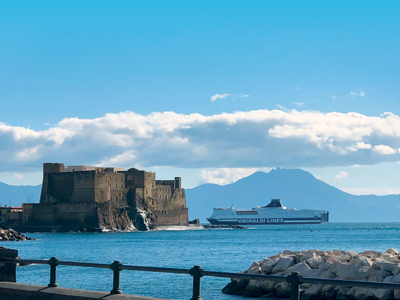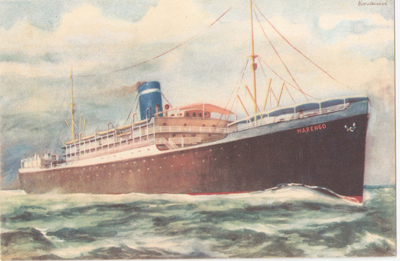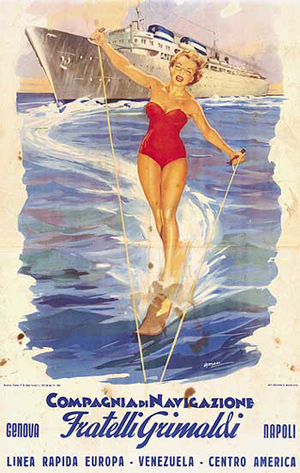History

GRIMALDI: THE STORY OF A GREAT ITALIAN COMPANY
The Grimaldi family's connection with the sea dates back long before the Group was founded. The earliest documents recounting the Grimaldi family's involvement in shipping date back to 1348, when the chronicles of the Kingdom of Naples reported that Queen Giovanna I gave the brothers Rajinerio, Richerio and Perino de Grimaldis a precious artefact of solid gold, as a guarantee for the chartering of three ships.
Women were to play a key role in the Grimaldi family's entry into the shipping world, notably Amelia Lauro, daughter of Gioacchino and sister of Achille, who married Giovanni Grimaldi.
In the second half of the 19th century, the Sorrento shipowner Gioacchino Lauro founded a steamship company, one of Italy’s first joint-stock companies in the shipping industry. Gioacchino's son, Achille, inherited his father's passion for the sea and also his business acumen, becoming Europe's most important shipowner between 1960 and 1970. Giovanni Grimaldi on the other hand was a lawyer and landowner: although highly educated, he lacked the seafaring spirit of his ancestors. It was Giovanni’s wife, Amelia Grimaldi, who introduced her children to the sea, asking her brother Achille to take Guido under his strict but wise guidance.
In 1947, Guido and his brothers Luigi, Mario, Aldo and Ugo Grimaldi created a new shipowing company by purchasing a Liberty ship, a type of cargo vessel used by the American Navy during the Second World War. This was the start of what was to become one of Europe's most important private fleets: Fratelli Grimaldi SpA.
Business grew steadily during the 1950s and 1960s and the post-war emigration was at its peak when Grimaldi began to focus on the Mediterranean-South America route. In the following years, given the increasing demand for more comfortable passenger services, the fleet was upgraded to include new, modern liners.

In 1970, the Warrington car carrier enabled the launch of the first regular service transporting Fiat cars from Italy to the UK market. This strategic agreement between Fratelli Grimaldi SpA and the Turin-based car manufacturer represented a significant growth opportunity for the shipping company, which began to create a dense network of trade routes, firstly in the Mediterranean and later in Europe, the Baltic, West Africa and South America. This event marked the beginning of the modern era and over the last forty years, rolling freight transport has been the driving force behind the Group's growth.

The early 1980s saw another milestone in the company's development. The Neapolitan shipowners embarked on a major conversion project, which led to the gradual abandonment of the oil trade in favour of a specialisation in ferries and car transport.
In the mid-1990s, the brothers Guido, Mario and Aldo Grimaldi decided to split the company into two different entities: Grimaldi Genova, owned and managed by Mario and Aldo, and Grimaldi Napoli, corresponding to the current Grimaldi Group, owned by Guido.
The twentieth century ended with the launch of a major plan to buy new ships and a transformation from a purely shipowning and sea traffic management role to the figure of logistics operator. Thus began the acquisition of terminals in the main ports served by the Group's ships, from Northern Europe to the Mediterranean and the coasts of West Africa. From the beginning of 2000, the company embarked on a process of acquiring a number of shipping companies, gaining international leadership in the ro-ro sector. Since then, the Grimaldi Group begun a strategy of widening its network of services as part of a broader plan to offer logistics services combined with maritime transport on a global scale.
Over the last decade, the Group proceeded with an expansion policy concerning its fleet and shore services. The Group invested heavily in the renewal and strengthening of its tonnage, first of all by designing and ordering the construction of new, high-performing units with a reduced environmental impact. On the other hand, numerous ships already operational underwent important green conversion works.
In parallel, the Group evolved to an integrated logistics operator, running a network of over 20 owned and managed port terminals located in the Mediterranean, Northern Europe and West Africa and using various land transport companies for door-to-door distribution of brand new vehicles.


